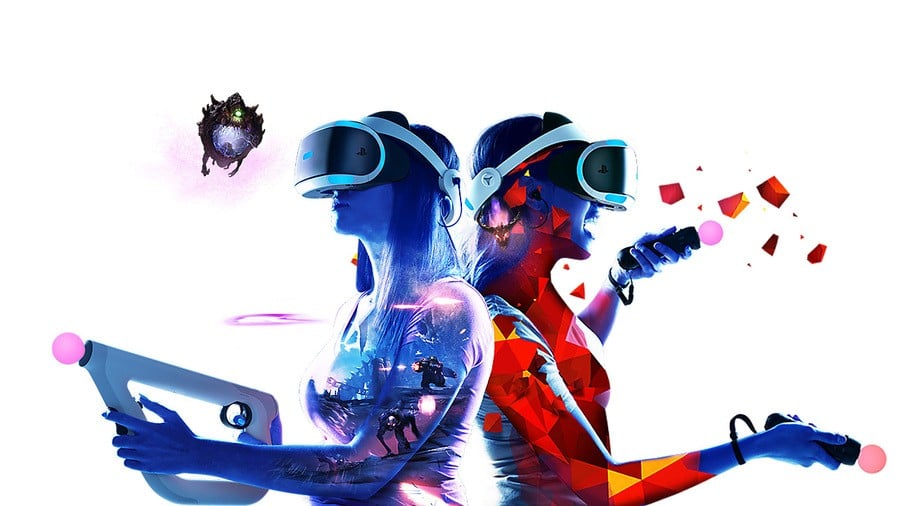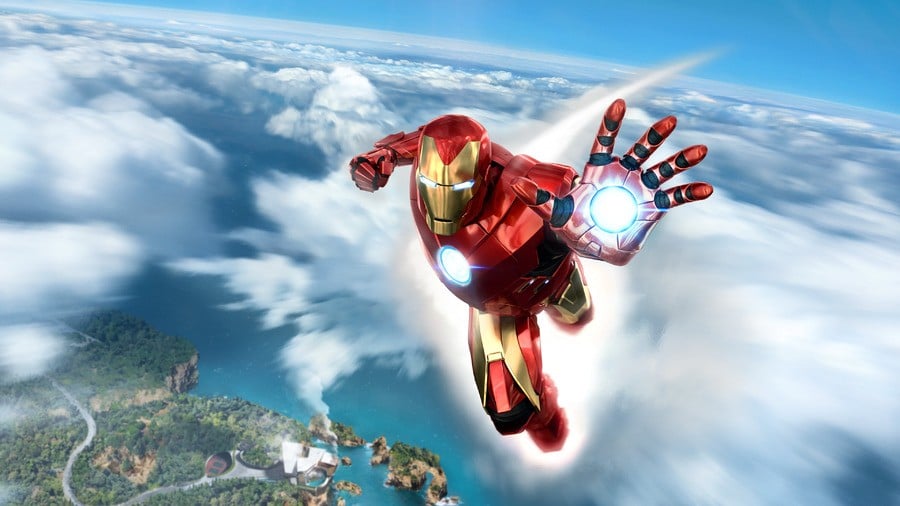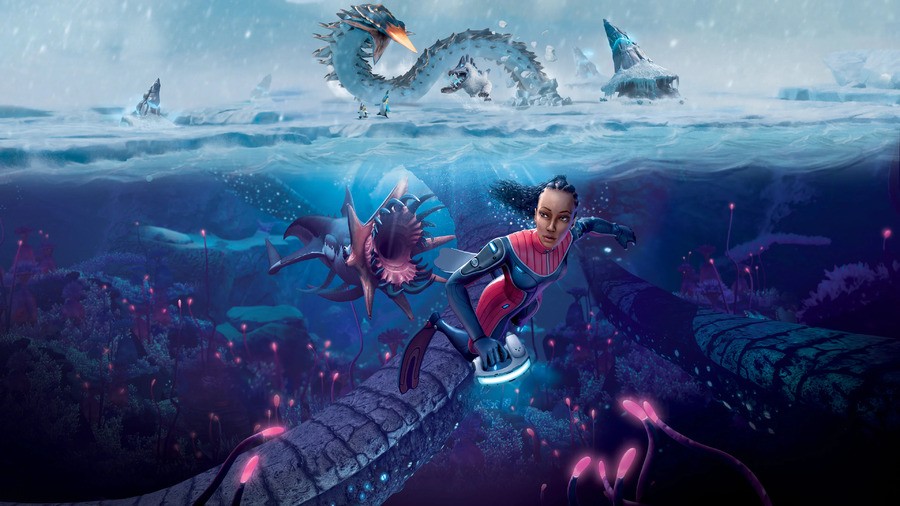
I’ve been thinking about PSVR a lot lately. I loved the original headset, and I’m very proud of how Push Square – in my probably biased opinion – had some of the best virtual reality coverage online at the time. I’ll readily admit that I’ve dropped off a lot since the PlayStation 5 came out – that spaghetti of cables eventually became a roadblock I couldn’t overcome – but Sony’s next-gen virtual reality device has me feeling the same butterflies of excitement I experienced prior to the original unit.
I think virtual reality is in a slightly different position these days: more people have experienced it and understand its potential. There was understandable scepticism when the first headset released; I think that’s mostly eroded now. Products like Oculus Quest have proven that VR can be an additive experience; it’s not here to take away traditional pancake play, but to supplement it with unique software that simply can’t be done on a standard screen. The possibilities are endless.
Subscribe to Push Square on YouTube166k
Which brings me to next-gen PSVR: I think, even at the time of the original headset’s release, I was aware that it was a rudimentary attempt at the technology. Sony did a great job repurposing old hardware like its PS Move controllers to bring costs down, but despite delivering some genuinely jaw-dropping software – like Astro Bot Rescue Mission and Blood & Truth – I think everyone knew where the medium could go with time.

One of the reasons I love video games is because it’s the perfect intersection between technology and entertainment. And I’ve always appreciated PlayStation’s ability to bring bleeding edge innovations to the general consumer. Sony doesn’t necessarily make the absolute best hardware on the planet, but what it does very well is design products that are affordable yet still forward-facing and future-proof. I’m confident its next-gen PSVR headset will further this philosophy.
And I’m really excited to see where that takes us. A report published overnight seemingly revealed key features from the platform holder’s new headset, including haptic feedback, 4K resolution, and foveated rendering. When paired with the new pads – which include a form of finger tracking, as well as the adaptive triggers from the DualSense – we’re looking at a true generational leap here. The sense of presence and ease of setup is guaranteed to be a game-changer.
Foveated rendering, in particular, could be transformative. The idea is that the headset can track where you’re looking, meaning that it can render objects within your gaze in higher detail. This means that computational power can be saved, as objects in your peripheral vision don’t need to be displayed at their best because the hardware knows you’re not looking at them anyway. It’s easy to imagine how this technology, paired with the PS5’s SSD, could work wonders for VR presentation.

And I do think the hardware of the PS5 itself is a key part of the puzzle here. The SSD, which we’ve talked about lots in pancake play, is going to be transformative in virtual reality worlds; loading was a big issue in Marvel’s Iron Man VR, for example, breaking the immersion immensely – but it’d be non-existent on Sony’s new console. The new Tempest audio engine, as well, with its 3D positional sound is really going to significantly enhance the immersion in virtual reality.
You put these things together, and pair it with the improved resolution of the headset and controllers that will have all of the features of the DualSense but actually be properly tracked, and I think it’s hard not to be excited. Research shows that haptic feedback in VR headsets can be used to reduce motion sickness by providing meaningful feedback when you move, but also consider how developers will be able to program raindrops falling on your head and pair all of that with the aforementioned 3D audio.
Lately I’ve been playing games and imagining what they’d be like in virtual reality. I found exploring the underwater world of Subnautica: Below Zero refreshing and unique in a recent review, for example – but that exact same game in virtual reality would be transformative. The sense of discovery is awesome on a traditional screen, but just existing within that space in VR would take it to the next level: it’d be magical and haunting all at the same time – escapism at its finest.

And this is what I mean about video games being the perfect intersection between technology and entertainment. I personally play games because I enjoy the escapism aspect they provide: it allows me to be someone else, temporarily, and experience things I otherwise can’t. In a year where we’ve all been forced to stay at home, games are the medium which have allowed me to travel to new worlds all from the confines of my living room.
I think virtual reality takes that immersion to the next level, and with its new PSVR headset, it sounds like Sony is removing many – if not all – of the barriers that existed with the first iteration. I’m sure there will be caveats and drawbacks – this still needs to be an affordable commercial product, of course – but I’m beginning to dream all over again. The product that PlayStation appears to have in the pipeline sounds like a significant step up, and I simply can’t wait to experience it for myself.
How do you feel about next-gen PSVR at this moment in time? Are you hyped for the headset, or merely cautiously optimistic? Do you think Sony is wasting its time on the technology? Let us know in the comments section below.





Comments 50
Day one purchase.
I’d like to see more. And to get an idea of pricing. Don’t get me wrong, it sounds great but it also sounds very very expensive.
Just waiting for the announcement - guaranteed pre-order. Was waiting for the PS5 to get a PSVR.
I have VR on PC, so I am already sold on it. Lone Echo and Alyx are amazing. And tons of hrs playing my driving games and Elite Dangerous in VR.
I’m interested but I probably wouldn’t buy it. I own the PSVR V2 and I have tones of games for it but find I rarely want to play it. I don’t like wearing the headset or using those godawful move sticks. I’d much rather play a regular game, even though I have enjoyed some PSVR games (Moss, Dino Frontier, Iron Man). Tbh I don’t like being completely immersed (or cut-off) - I like being able to hear my phone or a knock at the door. Maybe I’ll cave when the new tech arrives but I can’t see my overall view of VR gaming changing.
Day one for me aswell, it also needs to be BC with the previous headset's games as I and many others didn't get to experience them.
Pancake play? I haven’t heard that term before 😁
I’m definitely in the “curious to know more”-camp on next-gen PSVR. Sounds awesome so far.
I’m interested in this depending on the cost. I know it won’t support the current VR games but wish it would.
I haven’t been playing my current PSVR with the PS5 - not because of the wires but because they box won’t allow pass through of 120 Hz. And with my recently purchased LG CX, I want to take advantage of that. Even more of a pain now to switch the cables to use PSVR.
Day one for me, if possible of course... Very excited to see the launch line up , hopefully Gran Turismo 7 fully playable in VR
I'm definitely going to buy day one. Just like PSVR. As for my excitement level. Its hard to gauge as its just too far away to let myself get hyped up. I may also be more excited cause I have so many friends who are just holding out for the next generation of PSVR. But this time next year i can guarantee my hype will be off the charts!
Seems that most peoples problems including myself, stems from those god damn wires, eliminate those and add great precise controls,a crystal clear image (the psvr is like looking through a dirty window a lot of the time) and of course some first party bangers from Sony and I'm day one.
If I buy it, I'm gonna wait until I see some decent games for it (unlike my 1st gen PSVR, which earns a living as a dust collector due to there being only one, out of the +60 titles that I own for it, being what I consider to be any good).
Yeah I'll be pre-ordering if possible. Essential purchase. It'll probably cost near the price of a new console, but it'll be worth it.
I agree I think it will probably be around the same price as the ps5, but if the hardware works with PS4 games and a PS4 console then that would be a bonus for me then I can sell the old equipment if that is the case, no more cluttered wires!
How does it play Beat Saber? This will determine whether its a Day 1 purchase for me, or something I get to eventually. I'm concerned that those new controllers, which look excellent for most other applications, will be too unlike-a-wand and cumbersome for a game like Beat Saber.
I'm considering buying a Quest 2 for my Beat Saber fix, as my PSVR just can't keep up anymore and the tracking goes nutso. I think I might have busted the motion sensing part of the Move controllers, as I frequently get tracking errors where the saber will keep spinning after the point where I have stopped moving my wrist.
Playing through RE: 8 and it’s like gah this game is great but I want to experience it in VR!
Will it be backwards compatible with original psvr games
This will be my first proper VR experience and I can’t wait!!!
@NeonPizza the pass through mode on the quest is great for any burglar related needs,two quick taps on the headset and your back in the room 😁 how would you turn 360 with a wire attached to your head ? Unless they designed a miniature slip ring to allow full rotation.
@StrickenBiged yeah I knackered my move controller playing blood and truth, just won't track anymore my left hand was always deformed ,it wasn't that good in the first place,beat saber is excellent on the quest ,its like a different game compared to the psvr version with regards to control.
Am I the only one who really wants a decent driving game? Full grid (inc multiplayer). F1 VR the dream ticket. I’d buy it just for that alone.
Also I’ve never understood why someone couldn’t remake say Grid from ps3 in the original VR and get it to run. Dirt Ralky VR and wipeout surely show it can be done?
The existing VR solutions I find too isolating, not social enough. I would look like an idiot, while my wife would hate it, not having the chance to talk to me. No, thank you
I'm definitely more interested in PSVR2 then I was in the 1st one! My two concerns mostly come down to price and game support. Sony did support PSVR1 well enough so if they can put that kind of support behind VR2 that would be ideal. As for price if they can at least get it in around $450 that would be ideal but I wouldn't hold my breath for that.
I was originally going to get into VR when I could get my hands on a 1080Ti, but then crypto miners tied up the market for so long I ended up getting a 1060 instead, and it didn't seem worth it. Really looking forward to seeing what the next gen PSVR can do. I have limited mobility and the idea of getting to explore the world of some of the worlds I see on my TV, but in VR, that would be life-changing for me.
Gran Turismo 7 & PSVR2 will have me sold!
Hopefully a next gen version of Firewall with a proper single player campaign will come out too. Awesome game but just couldn’t be bothered playing because of the lobby wait times
Day one purchase. Just the controllers alone where enough to convince me, add eye tracking with foveated rendering and you are nearing ps5 levels of fidelity with the screen door effect being much reduced with the increased resolution of the screens (and their rbg tech was already among best in class). Wow. I have no doubt the great software support from PSVR will continue too.
I thank god they didn’t go for a weak, stand-alone, wireless, Quest-like unit, but instead a full fat device to move VR forward in the console space.
Funny this article coming up as i sit here in my bed, dizzy from playing Asgard's Wrath on my Occulus quest 2 and slight neck pain.
I wish i could get excited about PS5 VR, but my brain says it doesn't like it.
Unless they can make it much lighter and more confortable, i think i will be passing on it.
I think there will be 2 SKU or versions with different prices with different specs.
@Max_the_German Sounds like a win-win, to me.
@Residentsteven Get a haircut :/
I'm keeping in mind the hype over what the PS5 could do. I'll believe those specs when I see it.
I bought the psrv rev 2 near launch and it was great. Now I have an Oculus Quest 2 and apart from controls and resolution what's incredible is wireless VR. I wonder why a next gen HMD still has a cable... Of course, there are a lot of potential answers, such as data transfer quality/bandwidth, costs, latency, etc.
75% of games give me motion sickness after a few minutes (Skyrim, Farpoint, B&T, Ace Combat to name a few), but the games I could play like Beat Saber, Creed, Hot Shots and Astro Bot were amazing experiences. Some of the best party gaming I’ve ever been a part of.
I'm still on the fence. I bought PSVR V1 at launch and bought the bundle with the controllers. I really want PSVR 2 but there is a lot of things to consider for me.
Things like can Sony get it to be BC with PS4 titles. Then the most important thing the Price, this VR could be $499 or more. I also need to see a good line up of titles that are in the works.
Im sorry but i just dont think VR will ever take off and as such is a waste of Sonys time and resources
PSVR has some of the best moments I’ve experienced over the past 40 years of gaming. Incredible stuff. I can’t wait for PSVR 2.
Day one, no matter the cost.
@trev666 not take off ? There are 171 million vr users worldwide ,thats roughly the same as ps4 and xbox one owners combined
I need it yesterday but I don't know if/when I'll be able to get one.
IMO its the only way to play first person view right. I personally can't stand FPS on a screen like you are supposed to be a character but move (your head in particular) like a tank. So far It's always been a budget design choice from developers is my feeling (vs third person larger view) but VR achieves what first person perspective is supposed to be for the right reasons.
Of course there are many genres and being in a vehicle is probably the best experience VR can provide in particular in a plane or a spaceship, because you aren't taken out of immersion with the reality of locomotion.
For kids it's the wonder of being in the game with cute characters.
While I highly doubt PSVR2 will cost as little as its predecessor, I don’t think Sony will get away with charging more than the console itself. My bet is it’ll cost just about the same as the disk-equipped console at $499 USD. I could be very wrong but $799 USD doesn’t seem viable to me.
Huge supporter of PSVR and loved the headset dearly but I have taken the jump to the Quest 2 and to be honest, it has made me less likely to be a day one adopter of PSVR 2. Since I have a VR capable PC I get the wireless experience for smaller games and have now played Half LIfe ALyx and can play most top tier PC titles.
I think the kicker for most people will be the cable to the unit - now if this is because they are really using the PS5 to push visuals and experiences then I'll probably be on board. I have a wait and see - this is not Sony's fault, only that the VR headspace has moved on a LOT.
@vapidwolf and yet theres what 6 million psvr users so playsation have spent all that time any money making psvr and games and thats all its sold. less successful than vita
@trev666 I'd say the difference is that it's the first attempt at a new form factor, therefore kind of a new market. These sort of things very rarely see success on the first iteration. PS Vita on the other hand was a direct successor to the PSP, with portables bring a well established market segment.
It became obvious they could not complete with Nintendo, because their offerings catered to different ends of the games market, with Nintendo's being much more likely to invest in a portable device, evidenced further by Nintendo all but giving up on the home console market. Meanwhile at the same time it looked like mobile games were going to take the entire market for portable gaming, which hasn't really happened.
I think psvr 2 will sell less than psvr 1 did
@trev666 and about 22 million games, its hardly a failure. The technology is extremely popular and Sony want a share of the pie.
@trev666 Only time will tell
@trev666 that may well be true especially with the ps5 shortages ,but to be honest if its a great bit of tech and Sony supports it, ill be buying one and I'm not really concerned how many it sells.
@trev666 I reckon if the technology is as good as everything is pointing to with the power of the PS5 behind it, and Sony release some brilliant games that push the genre forward, I bet they will sell 10 million easy.
I can't wait and look forward to more coverage of this. Hopefully Sammy has learned a bit more since that horrible Firewall review.
It’s gunna rock, a must buy for me....
@vapidwolf Thanks for the recommend about the Quest. V tempted to get one as a Beat Saber cardio machine then.
@StrickenBiged it really is a great bit of kit,even better with a pc and sidequest,the freedom you have to mess about with its settings is brilliant.
Show Comments
Leave A Comment
Hold on there, you need to login to post a comment...